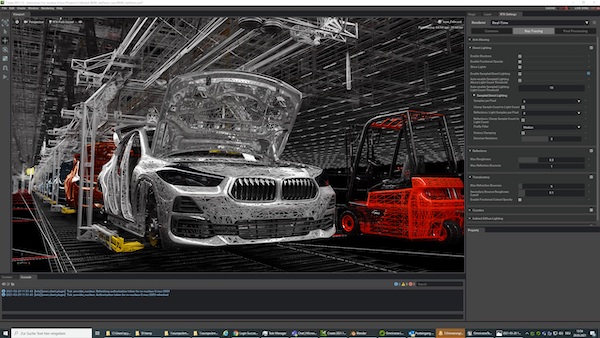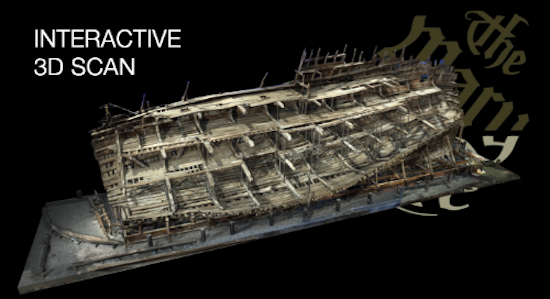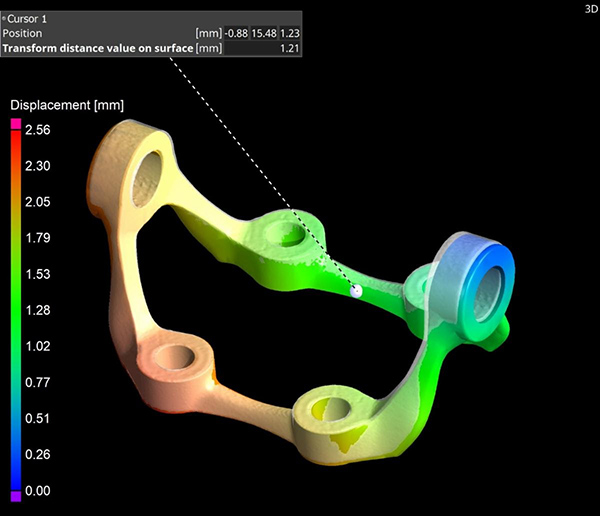
BMW and NVIDIA are partnering to use Omniverse to build a virtual factory to plan and improve its automotive production activities. Image courtesy of NVIDIA.
Latest News
June 13, 2021
Recent innovations in 3d scanning workflows are transforming the workflow for reality capture. 3D scanner companies have developed a new generation of lightweight, highly portable scanners that can be used by operators with little or no scan experience. There are also automated and robotic scan solutions. Together, these improvements have enabled scanning of very large parts and assemblies, as well as entire buildings and campuses for architecture applications. In addition, the scanners are being used for historic preservation, reverse engineering, quality control, measurement and other applications.
Combined with additive manufacturing, 3D scanning has enabled the recreation of obsolete parts for legacy machinery and vehicles, advanced reverse engineering uses and even some novel applications. At the Italy Pavilion at Expo 2020 Dubai, a full-size, 3D-printed replica of Michelangelo's David was on display. That replica was created based on 3D scans made with the Hexagon AICON StereoScan neostructured light scanner and a Leica Absolute Tracker with handheld scanner.
These scans of more complex assemblies and larger physical areas create ever more expansive volumes of scan data. The scan data can be exported into CAD and building information modeling (BIM) applications, and can be used to create high-resolution renderings. Increasingly, the software used to process the data from these high-performance 3D scan solutions relies on more powerful GPU compute resources in workstation-grade computers.
FARO provides 3D SCENE software that turns 3D scans into 3D visualizations that can be imported in a variety of point cloud and CAD formats. Users can also create virtual reality views. The software requires a dedicated graphics card with at least 8G of memory. For stereo rendering and viewing, users need NVIDIA graphics; VR rendering requires an NVIDIA 1080GTX or similar GPU. The software supports Oculus Rift S and HTC Vive VR headsets when SteamVR is installed.
FARO also provides the SCENE WebShare Cloud, which lets users store and share 3D scan data internally and externally via a web browser. Projects can be downloaded as 3D point clouds or high-res panoramic images, and used directly with Autodesk and Bentley Pointools products, as well as other CAD and BIM tools.

FARO SCENE software was used to process scans and images of the warship Mary Rose. You can see an interactive scan here. Image courtesy of FARO.
In addition to 3D laser scanners, there has also been an increased use of CT scanning for reverse engineering and part inspection. Volume Graphics has released an updated version of its tomography data analysis suite, which is used in conjunction with this type of scanning. The software is used to evaluate parts for structural deviations. The 3.5 version of the software now provides automated design-geometry adjustment and repair tools that can be used to correct and/or offset issues that stem from the manufacturing process itself. Moldmakers, casting shops and additive manufacturing (AM or 3D printing) providers can employ the software to detect and visualize material and/or design defects or distortions—and then employ capabilities to correct their CAD designs, compare values against nominal limits and ensure that final part quality meets applicable industry standards.
Recommended graphics cards for VG Studio Max include the NVIDIA RTX 4000/5000/6000.

A new compensation mesh color overlay in Volume Graphics’ industrial CT software version 3.5 helps users to clearly visualize, analyze and annotate any displacements in the compensation mesh. Image courtesy of Volume Graphics.
Creaform, which provides scan-based measurement, metrology and quality control solutions, also increasingly relies on GPU power for its solution set. The minimum system requirements for the HandyScan Black, Go!Scan Spark and MetraScan Black solutions include the NVIDIA RTX 5000 (other solutions require the NVIDIA Quadro T1000).
Large-Scale Digital Twins
At the recent NVIDIA GTC conference in April, the company announced that the cloud-based collaborative design platform Omniverse had emerged from Beta and was being applied to enterprise and manufacturing applications. Omniverse allows users from different locations to meet in virtual space and collaborate on designs or solve engineering issues using raytraced 3D objects.
BMW uses the Omniverse to build digital twins of its automotive plants. Dr. Milan Nedeljkovic, a member of the BMW board of management, participated in the GTC keynote.
“For the first time, we are able to have the entire factory in simulation. Global teams can collaborate using different software packages, using Revit, CATIA and point clouds,” he says. “BMW regularly reconfigures its factory to accommodate new vehicle launches . . . An expert 'wormholes' [travels virtually] into the Omniverse using a motion capture suite, records task movements, and another expert can adjust the line design in real time. Two planning experts can work together to optimize the line in Omniverse. We want to be able to do it at a scale in simulation.”
The scans used to help create these digital twins were completed with the help of NavVis, a german company that provides global scanning services for creating factory digital twins.
Another company that is enabling factory digital twins is a recent startup called Prevu3D (based in Montreal). Nicolas Morency, founder and CEO of Prevu3D, launched the company four years ago. With a background in mechanical engineering, Morency wanted to create a solution to easily create digital models of machines and factories.
In order to efficiently document a facility, he knew that 3D scanning/reality capture would be critical. “But 3D scanning is so massive that few people use it efficiently,” Morency says. “How could we make this high-value data accessible to more engineers and project managers? We looked at how to process files into high-fidelity mesh textured models.”
You can see a video of the Prevu3D process here.
With a full facility scan, the Prevu3D software allows users to navigate 3D models, measure and annotate the models; cut, move, duplicate and export parts from the model; simulate new machinery installations; and share the models with other stakeholders via the cloud.
“This can help an engineer do pre-design work,” Morency says. “One issue users have faced with AutoCAD is that a non-technical user had a hard time getting any insight. When using reality capture, you can get a grasp of what the engineer is talking about. You can engage other stakeholders in the discussion.”
Morency sees potential in combining this type of solution with the NVIDIA Omniverse platform. One of the key challenges of doing simulation is the hard work of modeling the environment by hand, he says. Very few facilities are really documented right now. Few people have an A-to-Z workflow to capture and process and deliver a high-quality meshed environment with the level of detail required for the system to do something meaningful with it.
By using software like the Prevu3D solution to deliver reality data to Omniverse, users can enable better and faster simulation while skipping the expensive process of manually modeling these environments.
More Dell Coverage

More NVIDIA Coverage
Subscribe to our FREE magazine, FREE email newsletters or both!
Latest News








